
Science News
2010: Year in Space

Sunset for the shuttle
Though astronauts and cosmonauts often encounter striking scenes of Earth's limb, this rare image has the added feature of a silhouette of the space shuttle Endeavour. The photograph was captured by an International Space Station crew member during the shuttle's approach on Feb. 9. The orange layer is Earth's troposphere, where the planet's weather and clouds are contained. This orange layer gives way to the whitish stratosphere and then the mesosphere.
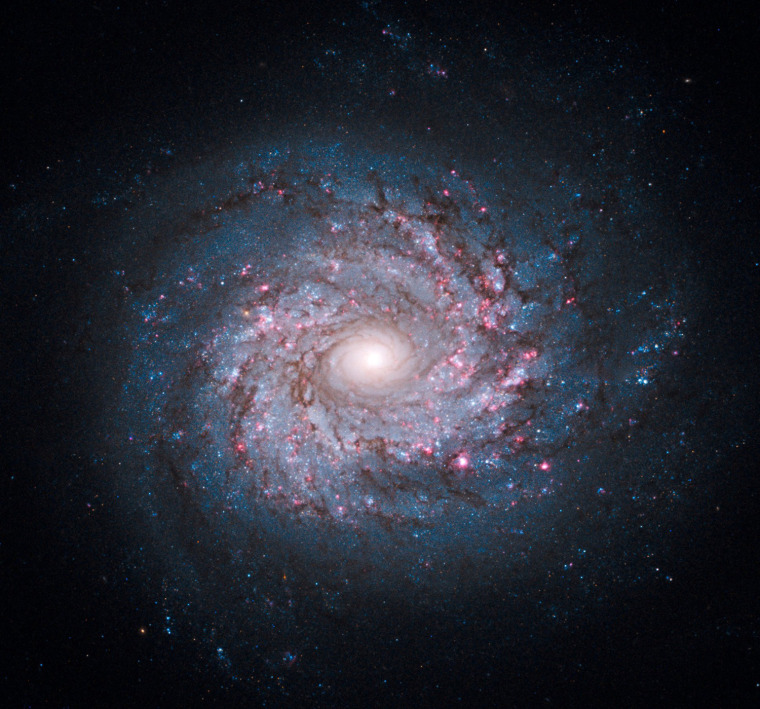
Spinning with starbirth
An image from the Hubble Space Telescope, released Oct. 19, shows the spiral galaxy NGC 3982 about 68 million light-years away in the constellation Ursa Major. The colors have been tweaked to emphasize star-forming regions, rich in hydrogen gas (in pink), as well as hot young stars ( in blue). Older stars are concentrated in the galaxy's white-yellow nucleus.
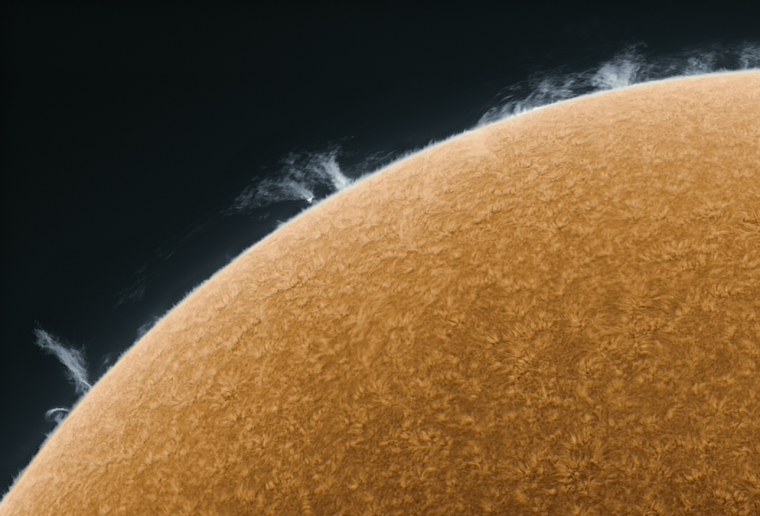
Warm and fuzzy sun
Astrophotographer Alan Friedman put together a webcam and a telescope in front of a high-end filter to create this stunning view of the sun from his backyard in Buffalo, N.Y. Using a specialized hydrogen alpha filter, Friedman is able to look at the deep red end of the light spectrum and capture the action of hydrogen gas in the atmosphere of the sun. The Oct. 20 photo was colorized to give the sun a pumpkin-orange hue for Halloween.
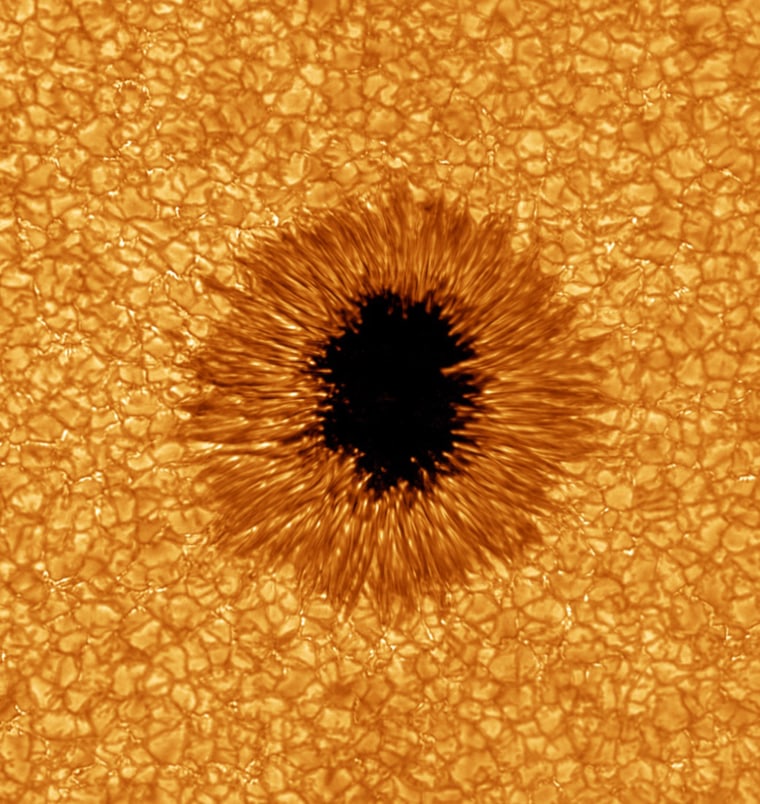
Solar stare
Scientists say this picture from the Big Bear Solar Observatory in California represents the most detailed view of a sunspot ever obtained in visible light. The photo was released on Aug. 24 to celebrate "first light" for the sun-observing telescope. Here's one more reason not to stare at the sun: It might be staring back at you.
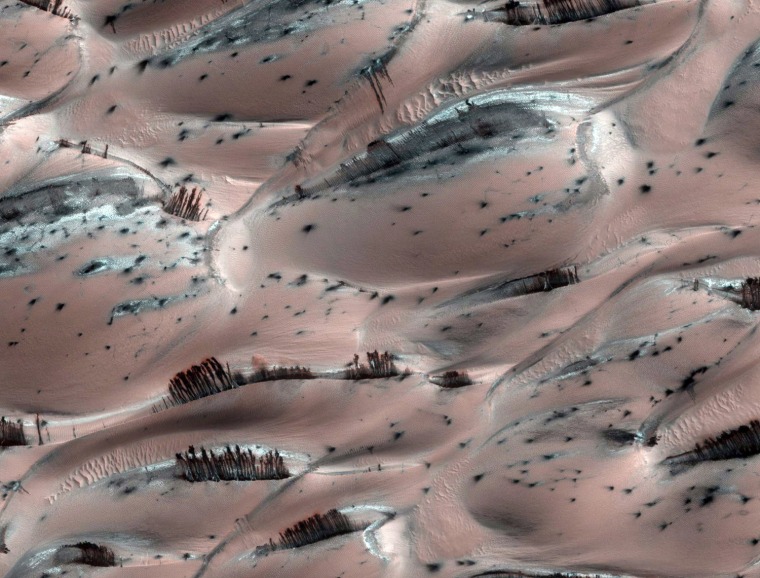
'Trees' on Mars
This picture from the high-resolution camera on NASA's Mars Reconnaissance Orbiter, released Jan. 14, makes it look as if pine trees are growing on the Red Planet. Scientists say the dark streaks are actually trails of debris, created by landslides that occur when carbon dioxide ice melts away from sand dunes near Mars' north pole.
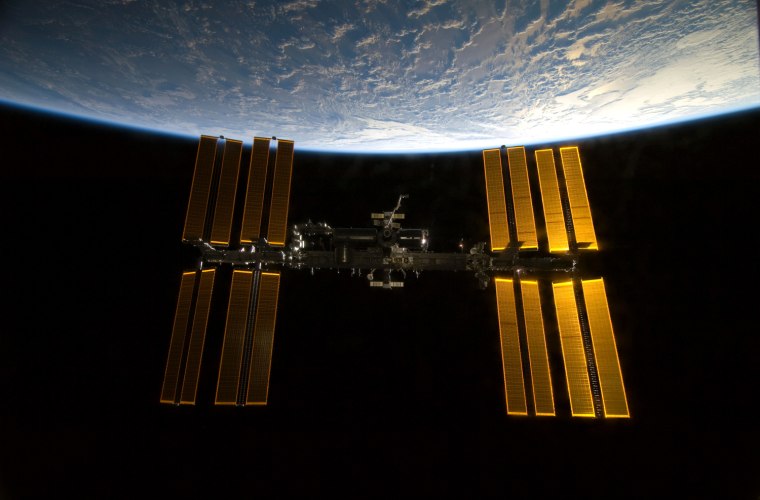
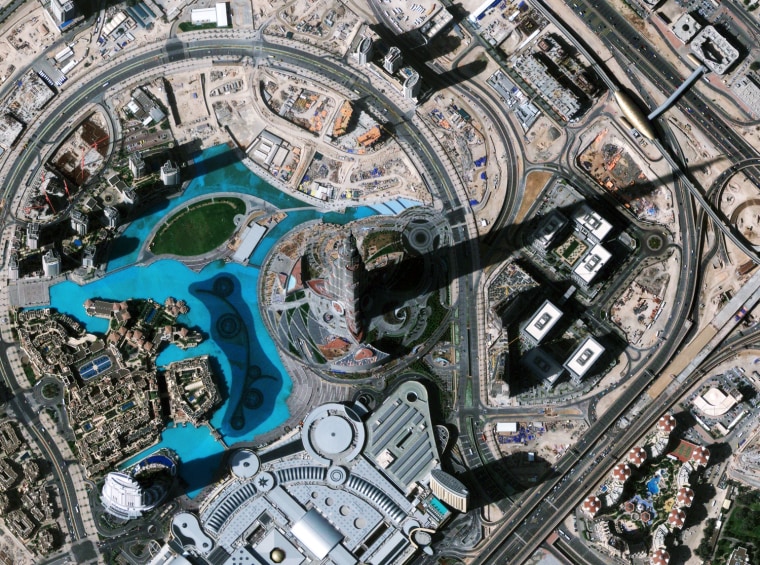

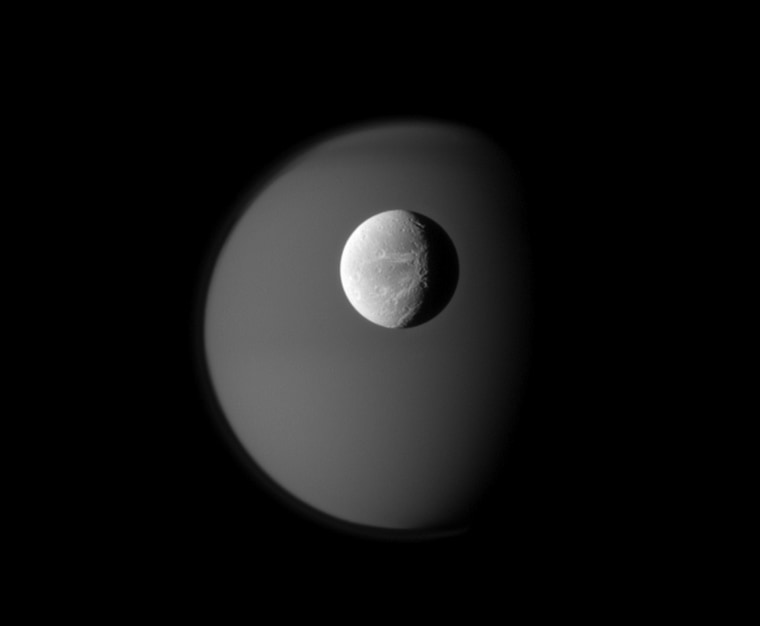
Two moons in the night
The light surface of Saturn's icy moon Dione is rendered in crisp detail against a hazy, ghostly Titan in the background. This picture was taken by the Cassini orbiter on April 10 and released on June 21.
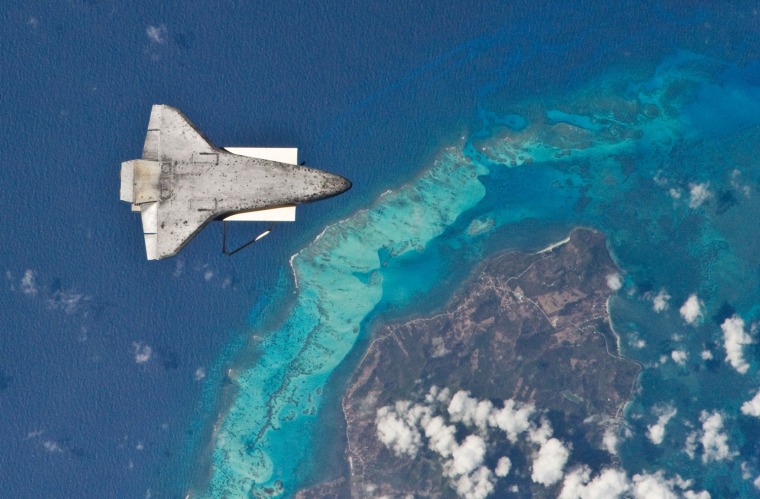
Beautiful backdrop
The underside of the space shuttle Discovery is visible in this view from the International Space Station, captured soon after the shuttle and station separated on April 17. The recognizable feature on Earth below is the south end of Isla de Providencia, about 150 miles off the coast of Nicaragua. The island belongs to Colombia.
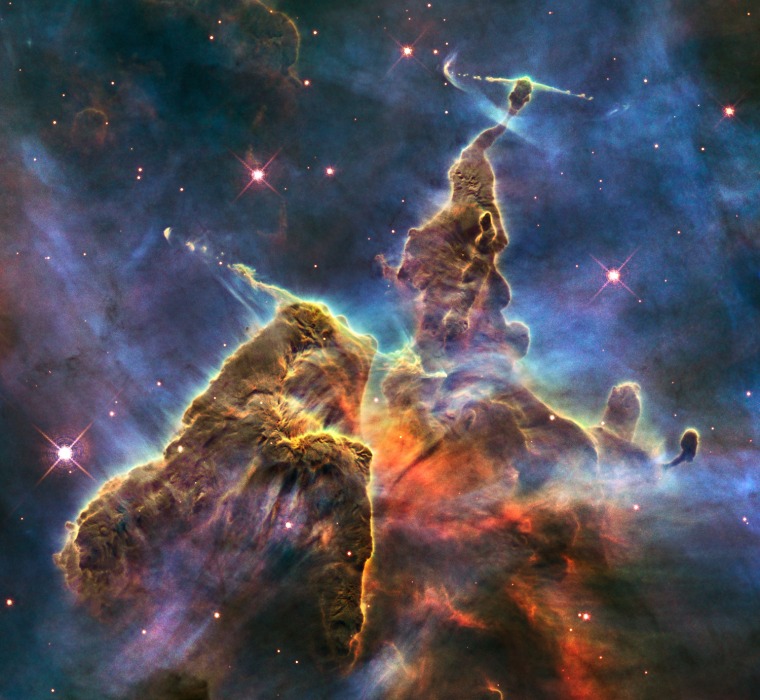
Happy 20th, Hubble
This Hubble Space Telescope image, released April 22, captures the chaotic activity atop a three-light-year-tall pillar of gas and dust that is being eaten away by the brilliant light from nearby bright stars. The turbulent cosmic pinnacle lies within a tempestuous stellar nursery called the Carina Nebula, located 7,500 light-years away in the southern constellation Carina. The image was released to celebrate the 20th anniversary of Hubble's launch.
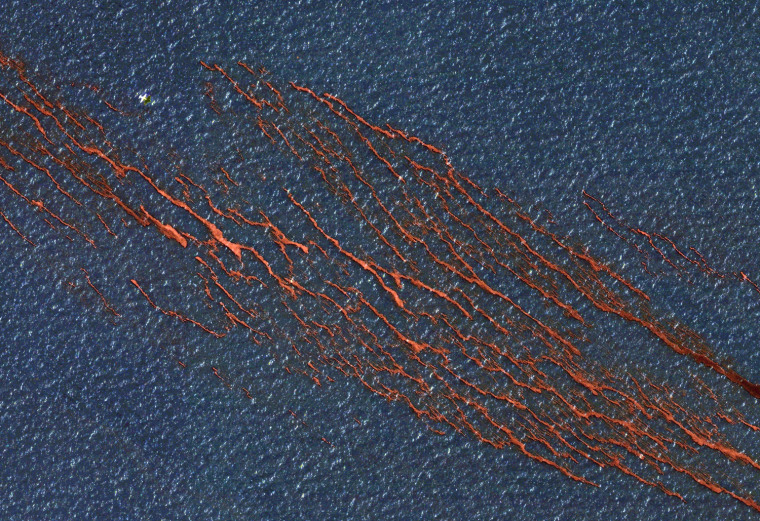

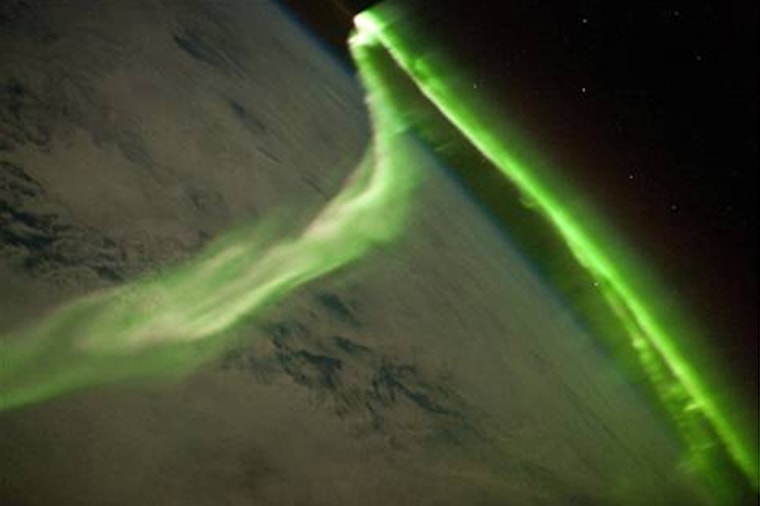
Southern lights from space
This striking picture of an auroral display was taken from the International Space Station during a geomagnetic storm that was most likely caused by a coronal mass ejection from the sun on May 24. The space station was flying over the Southern Indian Ocean at the time.
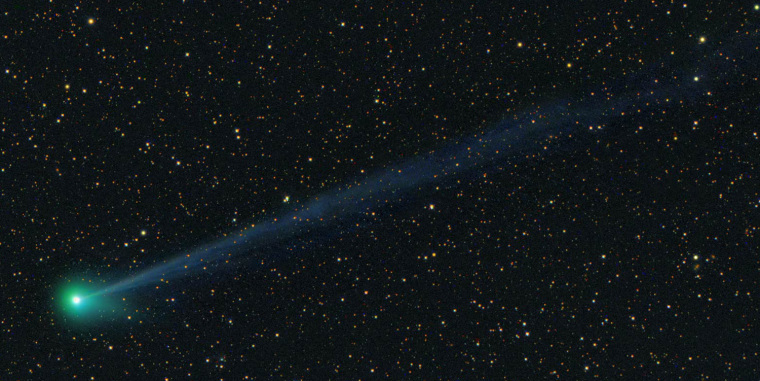
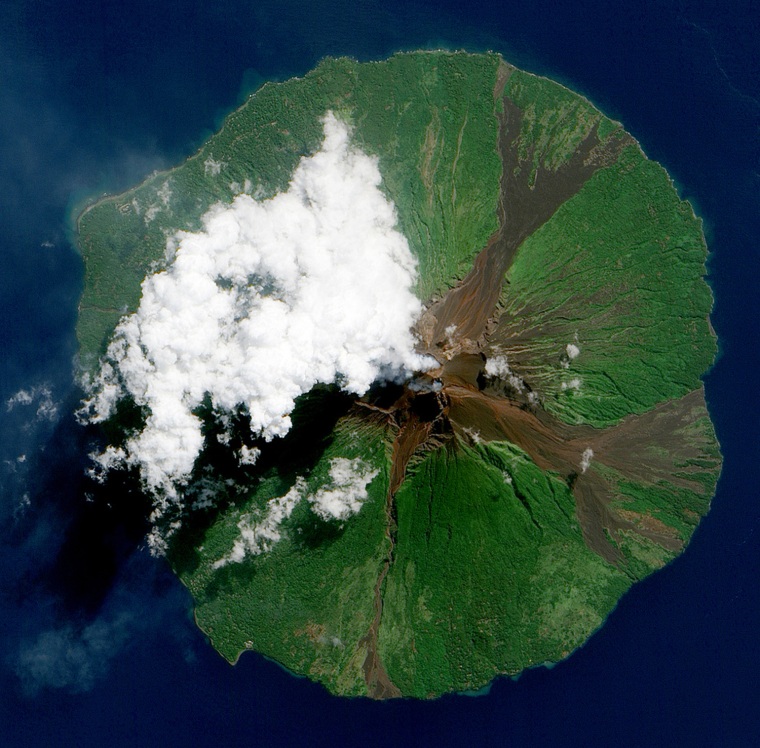
Bull's-eye volcano
Clouds pass over Papua New Guinea's Manam Volcano on June 16, just as a thin, blue-gray volcanic plume issues from the summit. The bright white clouds may result from water vapor from the volcano, or they may be unrelated to the volcanic activity. This picture was captured by an imager aboard NASA's Earth Observing-1 satellte, also known as EO-1.
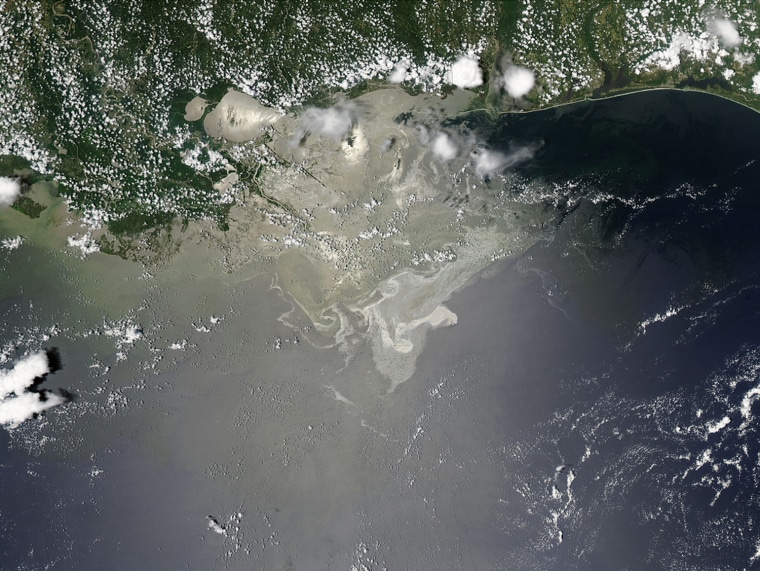
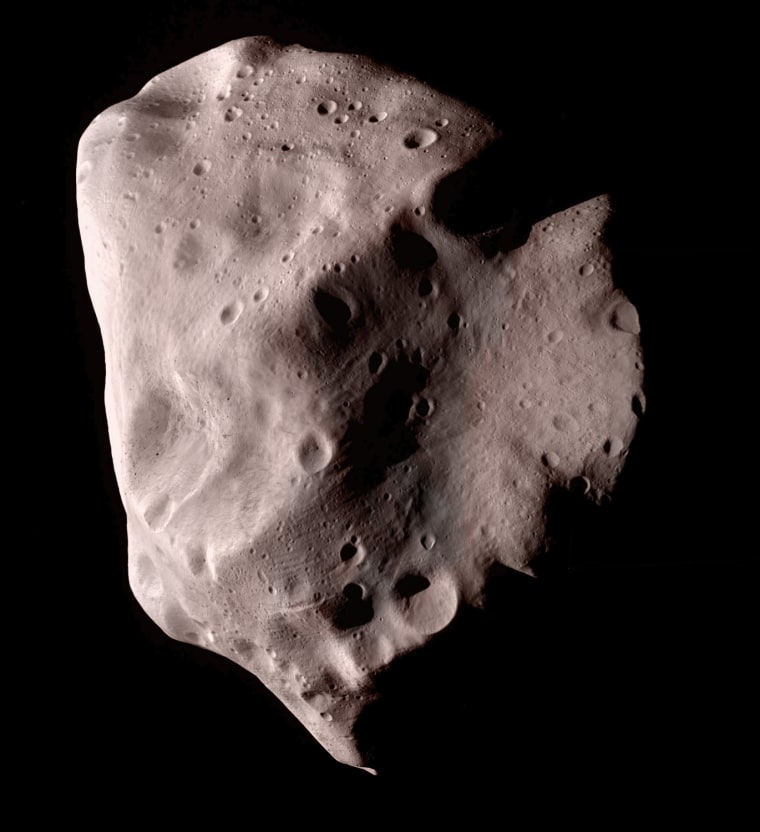
Asteroid gets its close-up
This view of the largest asteroid yet visited by a spacecraft was assembled from three images taken by the European Space Agency's Rosetta probe as it flew past Lutetia on July 10. The color is from a much more distant shot and was layered in by Ted Stryk, a philosophy professor at Roane State Community College. Like most solar system surfaces that have been exposed to space weathering for a long time, Lutetia is reddish in color.
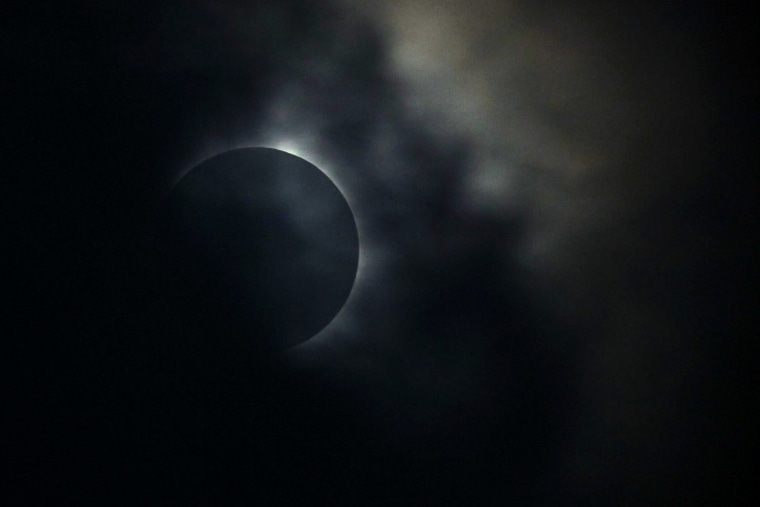
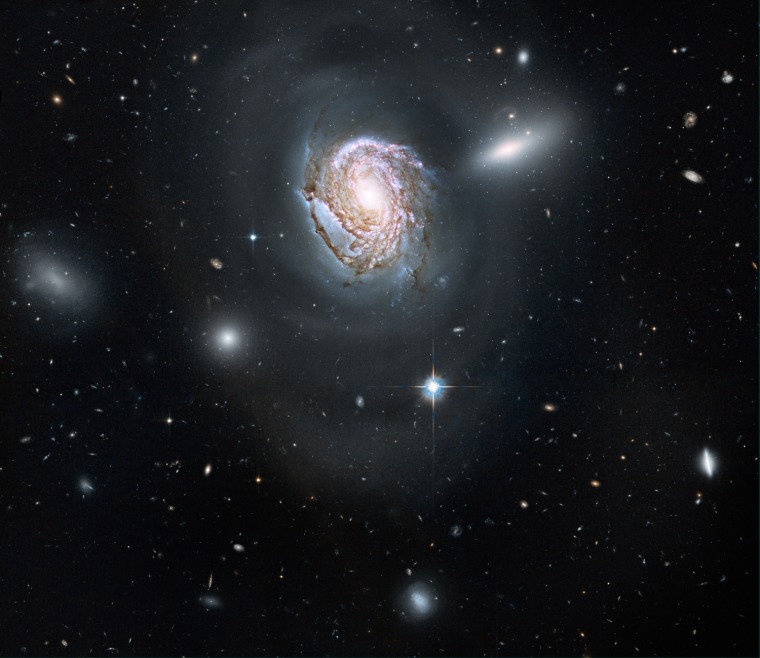
A galactic gem
A long-exposure Hubble Space Telescope image, released Aug. 10, shows a majestic face-on spiral galaxy located deep within the Coma Cluster of galaxies, which lies 320 million light-years away in the northern constellation Coma Berenices. The galaxy, known as NGC 4911, contains rich lanes of dust and gas near its center. These are silhouetted against glowing newborn star clusters and iridescent pink clouds of hydrogen, the existence of which indicates ongoing star formation.
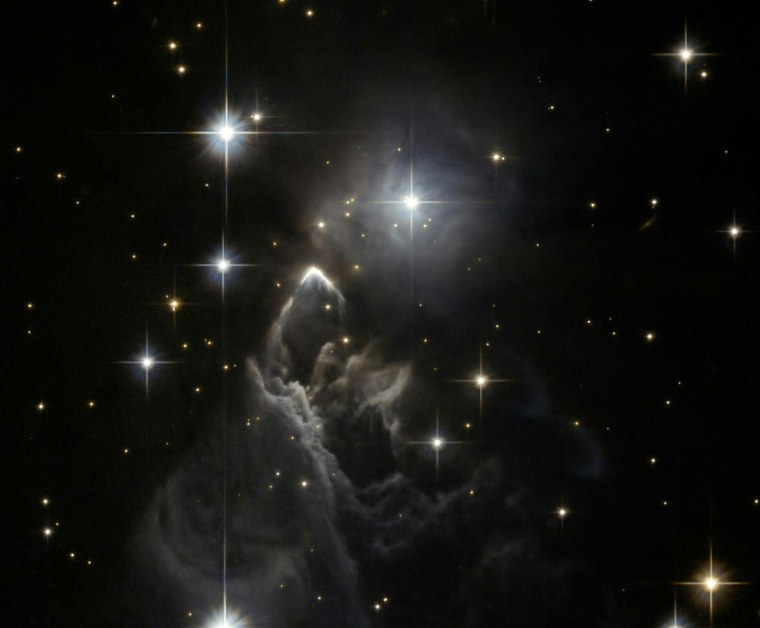
Ghostly mystery
This image from the Hubble Space Telescope shows a ghostlike nebula known as IRAS 05437+2502. The nebula is a small star-forming region filled with dark dust that was first noted in images taken by the IRAS satellite in infrared light in 1983. The new image shows many new details, but it has not uncovered a clear cause of the bright sharp arc.
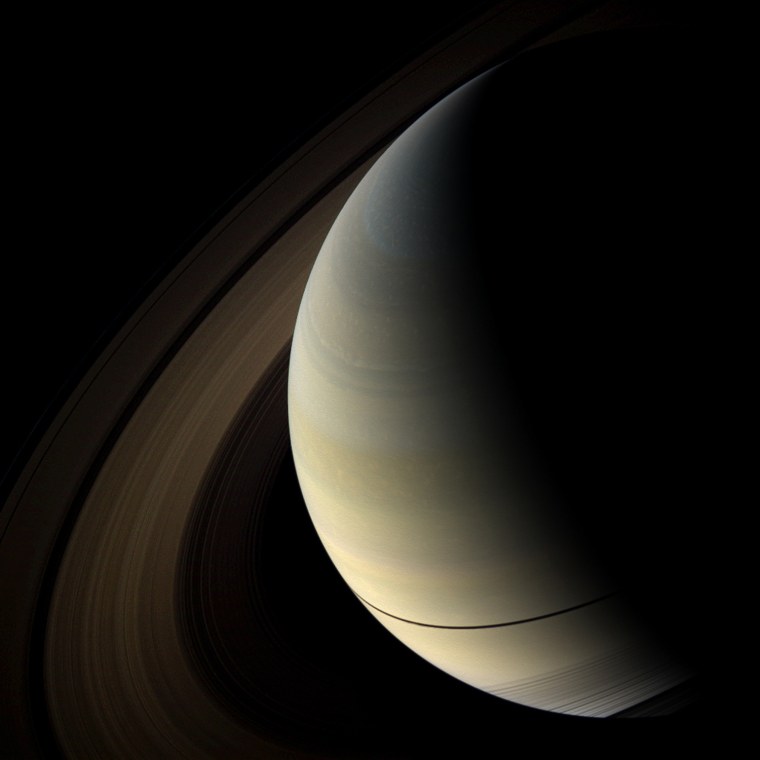
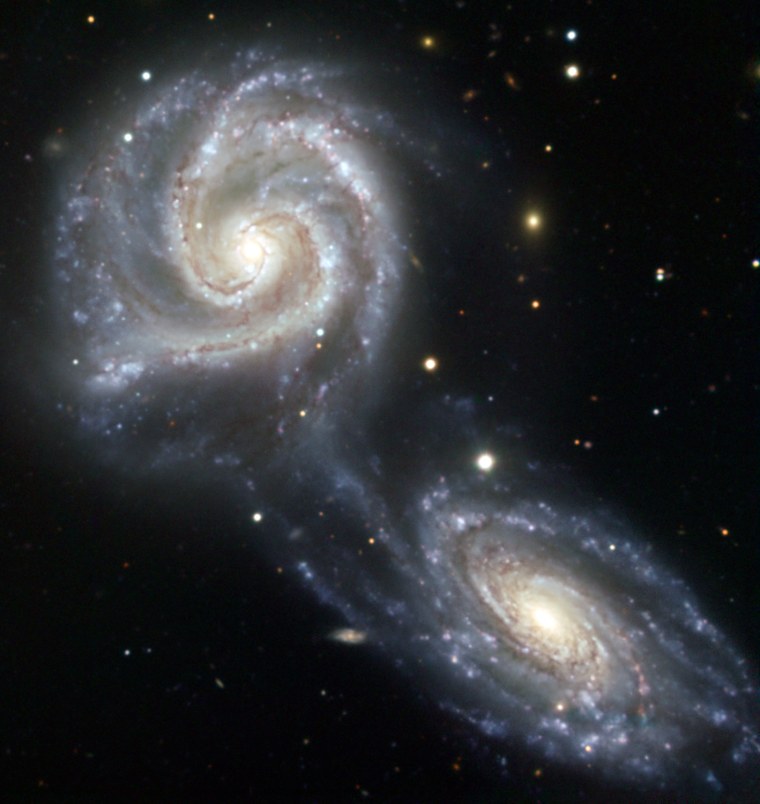
Dance of the galaxies
NGC 5426 and NGC 5427 are two spiral galaxies of similar sizes engaged in a dramatic dance. It is not certain that this interaction will end in a collision and ultimately a merging of the two galaxies, although the galaxies have already been affected. Together known as Arp 271, this dance will last for tens of millions of years. This image, released Aug. 30, was taken with the EFOSC instrument attached to the New Technology Telescope at the European Southern Observatory's La Silla facility in Chile.


X marks the spot
This image from the Hubble Space Telescope, released Oct. 13, shows a bizarre X shape at the head of a cometlike trail of material. Scientists say the "X" probably marks the spot of an asteroid collision. The 400-foot-wide object in the image is thought to be a remnant of a larger body that collided at about 11,000 mph with a rock that measured 10 to 15 feet across. The crash released an explosion with the force of a small atomic bomb. UCLA astronomer David Jewitt believes that the collision occurred in February or March 2009.

Cleared for landing
Virgin Galactic's SpaceShipTwo rocket plane is hooked underneath its White Knight Two carrier aircraft for a landing during Spaceport America's runway dedication ceremony near Las Cruces, N.M., on Oct. 22. SpaceShipTwo is slated to begin taking paying passengers to the edge of outer space from Spaceport America sometime in the next couple of years.
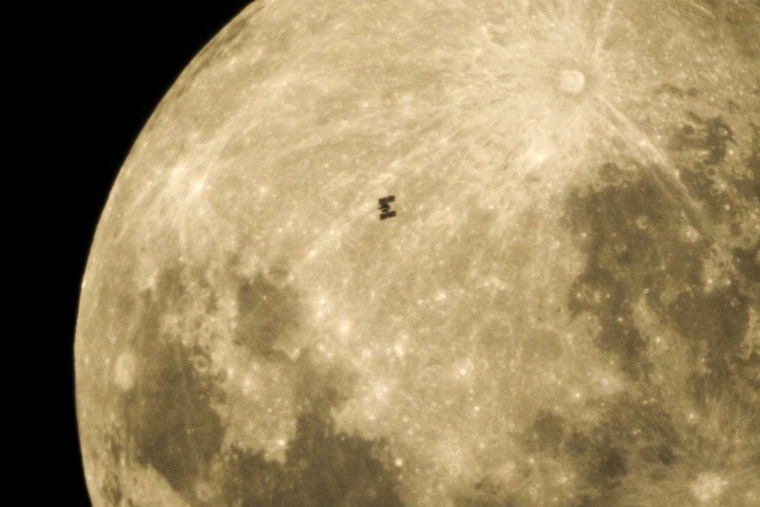
Station on the moon?
This view may make it seem as if the International Space Station is sitting on the moon - but the station is actually just passing across the moon's disk as it orbits Earth. The picture was taken Oct. 21 from Gyoerugfalu, 75 miles west of Budapest, Hungary.
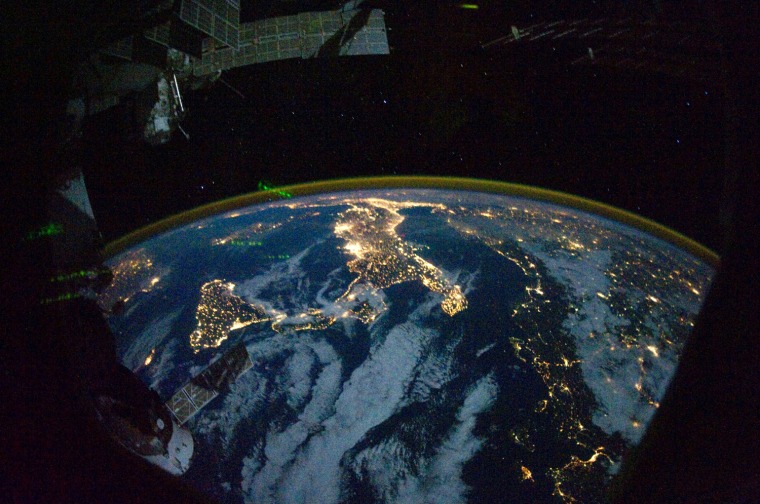
Night light
The island of Sicily and the boot of Italy sparkle with lights in this orbital view, captured from the International Space Station's Cupola observatory on Oct. 28. The 30-inch (80-centimeter) diameter of the Cupola's circular top window makes it the largest window ever in space, while six additional side windows open the view to all directions.
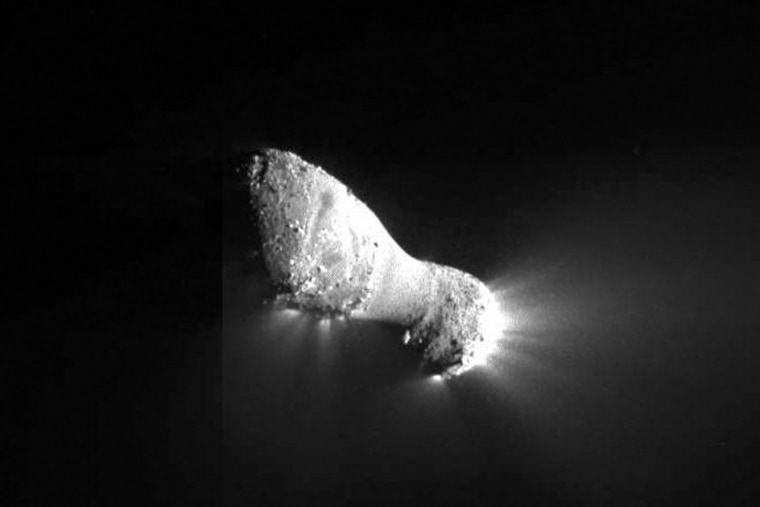
Cosmic peanut
NASA's Deep Space / EPOXI probe sent back this picture of Comet Hartley 2's nucleus on Nov. 4, during a flyby that brought the probe within 435 miles (700 kilometers) of the peanut-shaped object. The nucleus is approximately 1.2 miles (2 kilometers) long and 400 meters (a quarter-mile) wide at the "neck," or most narrow portion. Jets can be seen streaming out of the nucleus
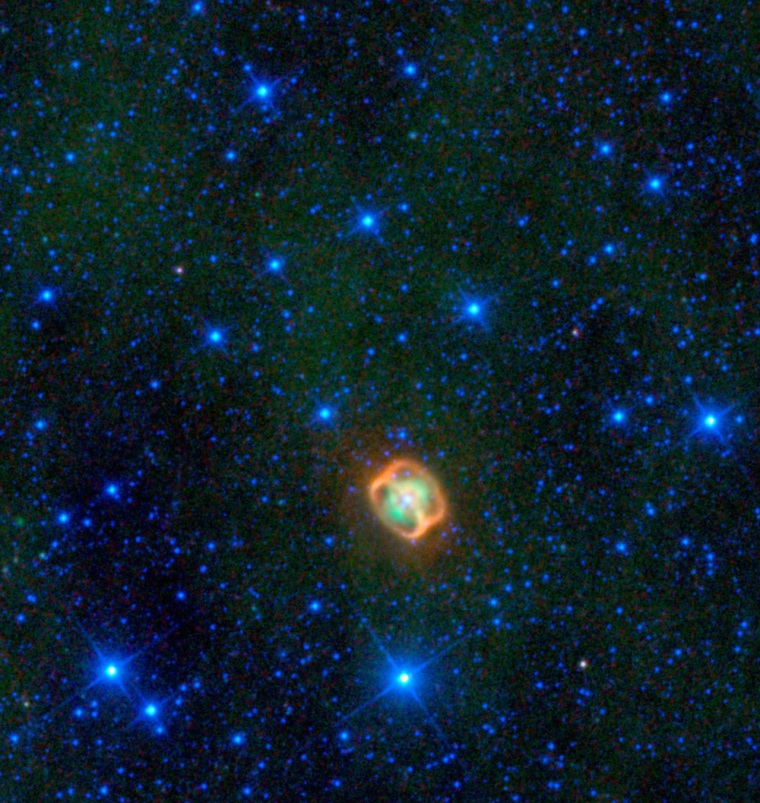
Cosmic sea creature
A colorful creature in a starry sea stands out in this image from NASA's Wide-field Infrared Explorer, or WISE. The image, released Nov. 17, shows infrared light that has been assigned visible colors we see with our eyes. The jellyfish-looking object is actually a very close pair of dying stars (white) surrounded by their shed material (green), and two unusual dust rings (orange) discovered by WISE.

Dragon blazes into space
SpaceX's Falcon 9 rocket lifts off on Dec. 8 from Launch Complex 40 at Cape Canaveral Air Force Station in Florida. The mission marked the maiden outing for SpaceX's Dragon orbital space capsule, which is being developed to resupply the International Space Station once NASA retires the shuttle fleet. The gumdrop-shaped Dragon successfully parachuted to a splashdown in the Pacific after making two orbits.
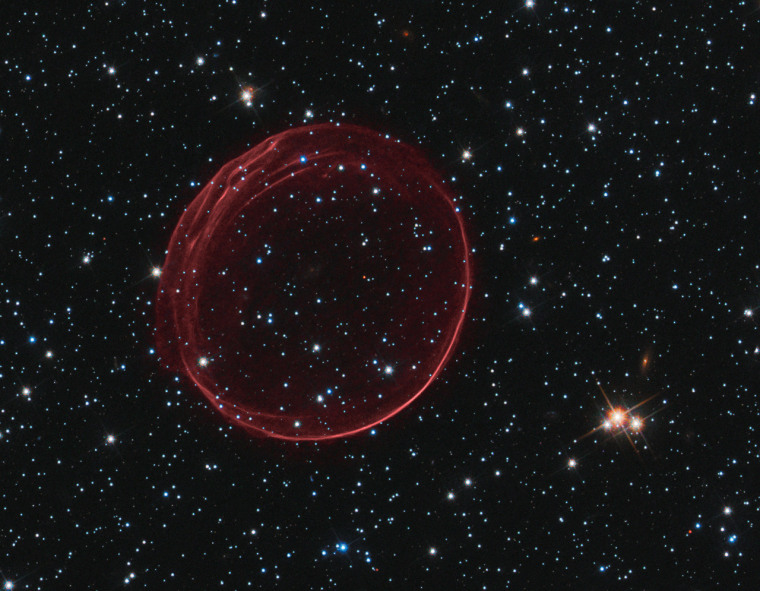
Cosmic ornament
A delicate sphere of gas, photographed by NASA's Hubble Space Telescope, floats serenely in the depths of space. The bubble is the result of gas that is being shocked by the expanding blast wave from a supernova. Called SNR 0509-67.5 (or SNR 0509 for short), the bubble is the visible remnant of a powerful stellar explosion in the Large Magellanic Cloud, a small galaxy about 160,000 light-years from Earth.